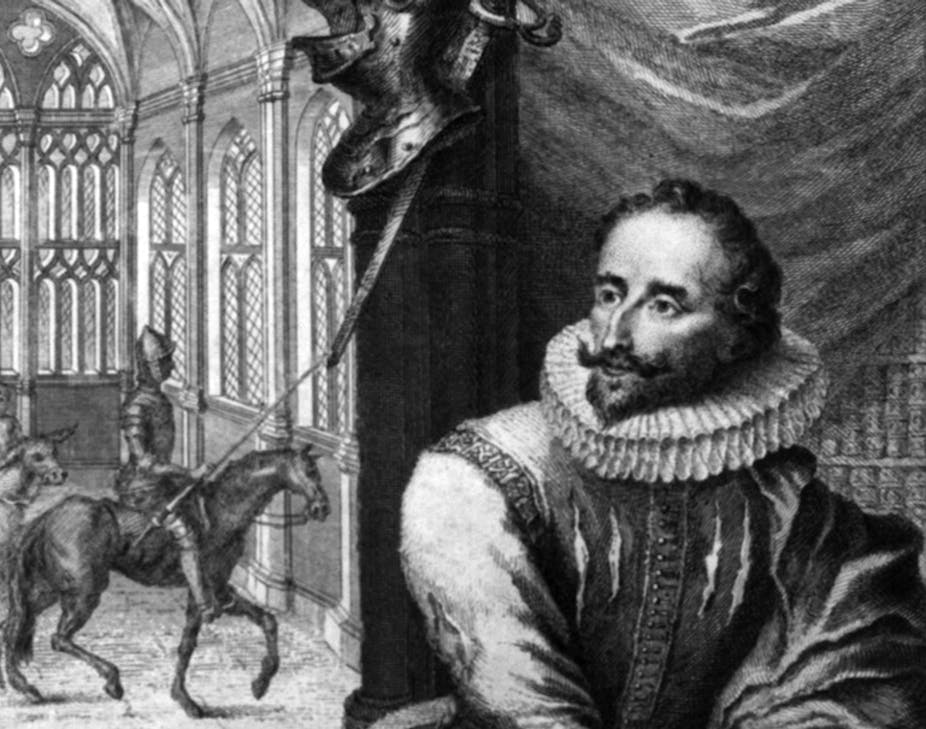After years spent securing funds and permissions, a team of forensic scientists and historians have launched an intensive search for the remains of Miguel de Cervantes, author of Don Quixote. Using the latest techniques of infrared imaging and ground-penetrating radar, the Spanish researchers are scanning the floors and walls of the Trinitarian Convent Church in Madrid, where Cervantes is most likely entombed.
The full investigation may last as long as a year. The first few weeks will involve meticulously mapping voids in the floors and niches in the walls to determine the most promising burial sites, while ensuring minimal disturbance to the cloistered nuns who still reside in the convent. Then, if the team can pinpoint likely remains, they will exhume the bones for identification and forensic analyses – a similar process to the Richard III extravaganza – just in time for the 400th anniversary of Cervantes’s death in 2016.
The precise location of the author’s final resting place is something of a mystery. This is due to the relative obscurity of his funeral itself, the vagaries of history and even the commemorative customs of the time. Apart from a notice of death in his parish registry, which specifies interment in the Trinitarian Convent, no formal documentation exists – his will is lost.
Possessing little wealth or social status, and having joined the Third Order of Saint Francis in his later years, Cervantes would have had an intentionally modest funeral. His tombstone might never have been marked as such. But if the author’s remains are more or less intact, and were not jumbled among other bones or destroyed in the reconstruction of the Convent in the late 17th century, they should bear distinguishing traits. In particular, the wounds he sustained as a soldier at the Battle of Lepanto in 1571 – a maimed left hand and gunshot wounds to his chest – should mark out the author’s skeleton among the others buried in the church.
But what is to be gained from exhuming Cervantes’ bones, if indeed they can be found? Unless the skeleton is clutching an unpublished manuscript, a post-mortem will add little to our knowledge of his life and letters.
Better to turn to his writing. As he composed the prologue to his final novel, Cervantes knew he was dying from the malady called, at the time, hydropesía or the “dropsy”. Today this is generally thought to have been diabetes. In what might be the last words he ever wrote, Spain’s greatest writer bids a playfully barbed farewell to his readers at the close of the prologue. He also expresses an irrepressible impulse to carry on writing:
Perhaps the time may come when I mend again this broken thread and say what words fail me here and what needed to be said. Farewell, waggish jokes; farewell, wittiness; farewell, merry friends, for I am dying and longing soon to see you, happy in the life to come.
Two of those merry friends (minor, forgotten poets, in this case) would contribute prefatory poems to that final, posthumously published novel, Los trabajos de Persiles y Sigismunda (The Travails of Persiles and Sigismunda). Their poems, utterly conventional set pieces, take the form of brief epitaphs.
Instead of real inscriptions on the site of the author’s burial, these printed lines commemorated his death and they ultimately stand as the earliest accounts of his passing. Cervantes himself had, in fact, written such occasional poems on the deaths of celebrities throughout his career – and had parodied the genre at the close of both parts of Don Quixote.
The opening lines of the epitaph by Francisco de Urbina read:
Wayfarer, the wide-ranging, rare
Cervantes is herein confined:
the earth his body may inter,
but not his name, which is divine.
And the second epitaph, Luis Francisco Calderón’s sonnet on Cervantes’s tomb, begins:
In this, O traveller, narrow marble lair,
a sombre urn, if not a lofty pyre,
you see the sacred ashes of a mind
who dares to scorn oblivion and time.
There is a poignant irony here. The poems represent the author’s funeral and burial in terms of mortuary customs of the Classical Mediterranean world: a funeral pyre, ashes, an urn, wayside monuments in the Graeco-Roman fashion – none of which reflects how Cervantes was actually buried and memorialised. So even in the immediate aftermath of his death, Cervantes’s “reality” was already clouded by fictions, and, more specifically, by conventional, anachronistic fictions.
The mainspring of his greatest work was precisely this profound question: what happens when we impose conventional fictions onto everyday reality, and vice versa? Perhaps it is appropriate that the earliest representations of Cervantes’s tomb illustrate the very theme on which the best of his writing meditates. And these subtleties, these ironies, are not likely to be echoed by scooping his bones up from the ground.
As Spain continues to claw its way out of recession, the costly public project has attracted its share of criticism. Madrid’s City Council, which is financing the research to the tune of €100,000, has countered that the project will bring profits by stimulating tourism.
But in addition to literary pilgrimages, I hope that this quixotic quest will also encourage an equally meticulous probing of Cervantes’s pages. And reinvigorated reflections on his written legacy might well begin with the question of how these commemorative customs shape our perceptions.

